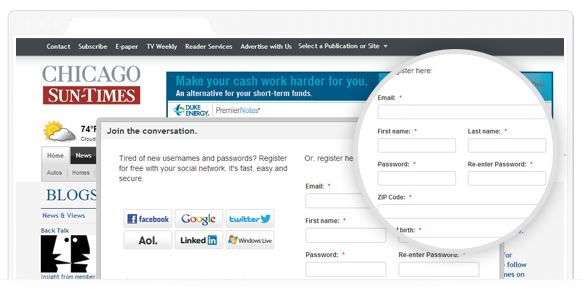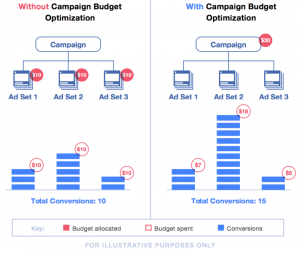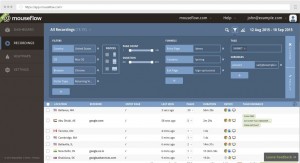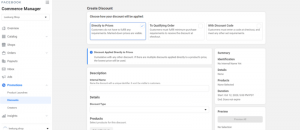
Ask anyone and he or she will probably tell you: yes, Starbucks makes a mean latte. The lattes, however, are only part of the reason why coffee lovers across the globe line up at their local Starbucks on a regular basis.
If you’re a frequent customer, the baristas will greet you by name, start making your favorite drink before you can even order, and ask about your two kids. They know you, and this personal, customized experience has developed alongside your relationship with them.
Chances are, this personalized experience plays just as big a part in why you frequent this coffee shop as your double tall non-fat caramel macchiato. This is exactly the type of relationship more and more consumers are expecting businesses to bring to the digital world.
Need proof? 87% of consumers agree that there is more to making purchase decisions than “identifying a need, exploring options, and purchasing.” 68% of consumers say that shopping today is less about brands or products themselves and more about what they are feeling and needing. On top of that, 73% of shoppers prefer to do business with brands that use personal information to make their shopping experiences more relevant.
Unfortunately, as many companies attempt to bring this offline approach to the digital world, they rely on solutions like third-party cookies and data brokers to gain information about their customers that isn’t provided with permission. This “digital spying” crosses the line and gets creepy fast, creating forced and often irrelevant user experiences, rather than meaningful customer relationships.
So how can leading brands get to know their customers and recreate this local coffee shop experience across their digital properties? Let’s take a look at three key tactics that businesses can use to start establishing genuine customer relationships.
Let Customers Self-Identify
Not only is being unknowingly “cookied” and tracked across the Internet creepy, but third-party cookies do little to inform businesses who their customers really are, merely providing a peek at device-specific browser history that may or may not belong to a known user. What’s more, data brokers often combine cookie data with unauthorized offline data such as purchase history, credit reports, medical records, and more in an attempt to build out “complete” consumer profiles.
Relationships start with identifying customers and learning about them in gradual, organic, and transparent ways. One of the most effective ways to do this is by prompting site visitors to register for and log in to websites or apps, and being transparent about how the data they are providing access to will and will not be used. This gives customers the opportunity to self-identify, and builds consumer trust by letting users share information with the business on their own terms.
By giving anonymous site visitors a fast and easy way to verify their identities using a pre-existing user account, Natura was able to scale and enhance its direct-selling model to the digital realm. The Brazilian cosmetics brand was also able to gain permission-based access to insightful user data that enabled them to start building more personal digital experiences at first touch. This convenient, customer-centric experience helped Natura grow its network to more than 100 million consumers and 14 thousand consultants!

Progressive Profiling
If your local barista were to ask how your job’s going or what you and your spouse like to do on the weekends the first time he or she took your order, you would most likely find this incredibly off-putting. However, if he or she were to ask you these questions after weeks of making your post-work latte or seeing you and your significant other drive-thru on your way to Saturday baseball games, these questions wouldn’t feel so invasive. The questions would feel more natural, because this is the type of personal information that comes out over time as relationships are developed.
Many brands make the mistake of asking for too much information at first touch and scaring potential customers away. In fact, nearly 85% of US consumers have abandoned registering for a site or app because they were uncomfortable with the amount or type of data being requested. In contrast, 30% US consumers claim that they are more willing to share information with a company if it is a brand they have come to know and trust.
Organizations must be careful that the amount and type of information they are requesting corresponds with their current level of customer interaction and intimacy, and grows organically over time. Progressive profiling allows businesses to collect additional data over the course of multiple customer interactions and as consumers feel more comfortable trusting the brand with their personal information.
Conditional workflows can introduce new form fields each time a customer logs in to a site or app, and additional information can be gathered as consumers engage with various touchpoints. For example, if a user were to search for a particular item, an organization could prompt him or her to provide more information about personal preferences to refine the search, enabling the business to provide more relevant results going forward.

This brings us to the next tip.
Pay Attention to Signals
With the explosion of social networks and subsequent consumer demands for interaction, many brands began to measure engagement across their sites and apps. However, rather than viewing engagement itself as a metric, it should be regarded as an opportunity to learn more about customers in an authentic, permission-based fashion.
Providing customers with numerous opportunities to engage with the business and its on-site community is key, and tying these actions to identity and other on-site behaviors like purchases is even more important. This enables brands to begin constructing complete customer profiles, uncovering top audience segments, and identifying and promoting highly valuable user behaviors. Ultimately, paying attention to customer signals provides the insight necessary to create more relevant and timely experiences, deepen relationships, and drive business results.
For example, did a customer share a particular item of clothing to his or her social network? The next time that user logs in, the brand should recommend matching items. Did he or she leave the business a glowing 5-star review? Why not email the customer a coupon valid toward another purchase? Do customers with a shared interest in ballet happen to leave positive reviews and spend an average of 10% more than other customers? The organization has just discovered something valuable about its target audience that it can leverage in future acquisition campaigns.

Transforming a website or mobile app into a Starbucks-esque experience may seem daunting at first, but with the right tools and strategies in place, any brand can start building meaningful customer relationships and experiences. To learn more about how to progressively get to know customers, download our free eBook, “Achieving a Single Customer View: The Holy Grail for Marketers.”
Digital & Social Articles on Business 2 Community
(389)







